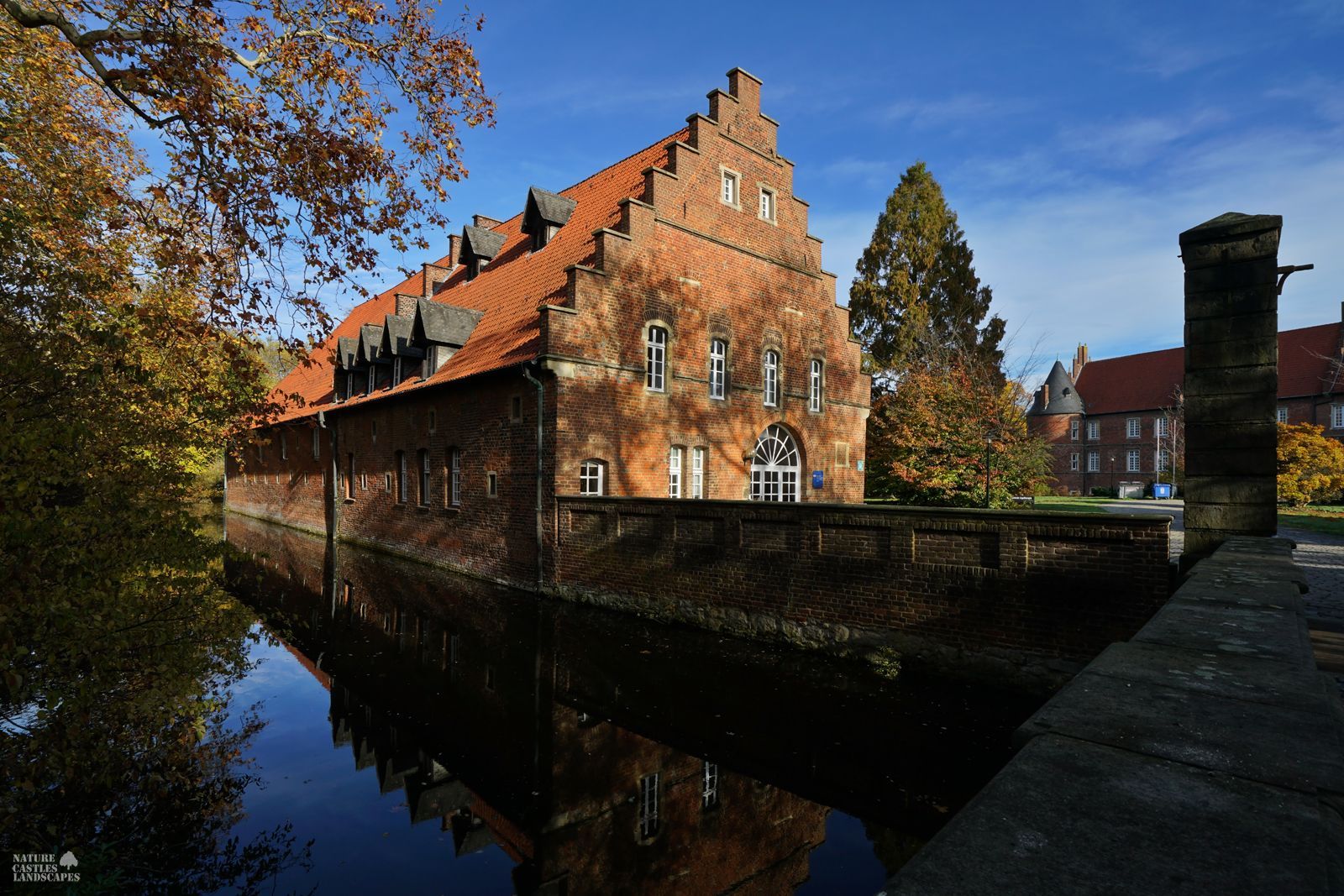HERTEN
CASTLE
IMPRESSIONS OF HERTEN CASTLE
Art Burgenland
There is a lot to discover in Herten Castle Park. One of those discoveries is on this trail. The Burgenland art axis is very interesting and not only takes you on a journey through the historical epochs of the cultural landscape, but also allows visitors to experience nature intensively in this way. As part of the RUHR.2010 Capital of Culture, the artist Nils-Udo created Burgenland, which consists of 15 green mounds of earth between one, two and three meters high. The change in the landscape caused by industrialization can be seen in the green hills, since human intervention has also changed the natural landscape. Nils-Udo has installed typical colliery buildings made of Corten steel on eight of fifteen hills. The models of the collieries, which have now become historic themselves, represent Herten's 130-year mining tradition. Corten steel has the property of rusting very quickly, only on the surface, so that shortly after they were erected, the miniature buildings became symbols of transience. The building ensembles consist, among other things, of the conveyor tower and the Malakow tower. A shed roof hall is also part of it. The artist, known under the name of Nils-Udo, began his career as a painter. After ten years, working with nature became the focus of his work. He is now one of the most prominent LandArt artists.
The Castle Park
Hard to imagine today, the Herten Castle Park was not accessible to the public for centuries. In the possession of Count Nesselrode, the approximately 30-hectare park was surrounded by high walls and the mighty gates remained firmly closed. Since the opening of the park in 1974, the palace park has enjoyed great popularity among the citizens of Herten. Between the middle of the 19th century and the First World War, the castle owners had two fish ponds and a large mixed forest, the castle forest, laid out in the southern part of the garden. The castle forest is 179 hectares in size. Of this, 125 hectares are forest areas and 31 hectares are agriculturally used fields and pastures. There are also water areas, sunbathing areas and wild meadows. The main tree species are English oak, hornbeam, copper beech, birch, poplar, red oak, alder, ash, sycamore maple, wild cherry and linden. The oldest stocks of red beech are 175 years old and the pedunculate oaks are 195 years old. Right in front of my front door, this park and the forest is a place of rest in the early morning hours and is populated by many animals, especially waterfowl.













































